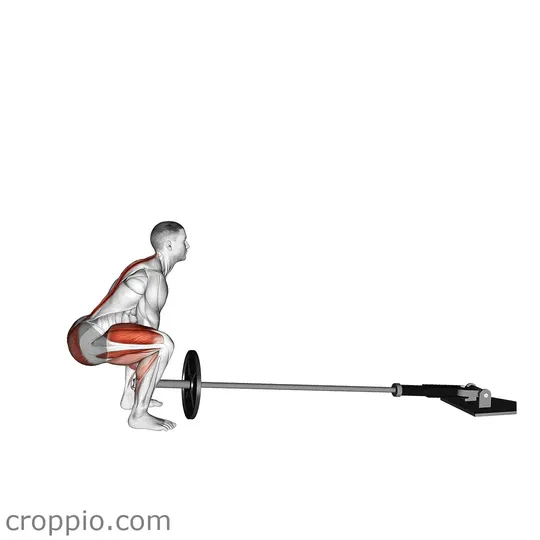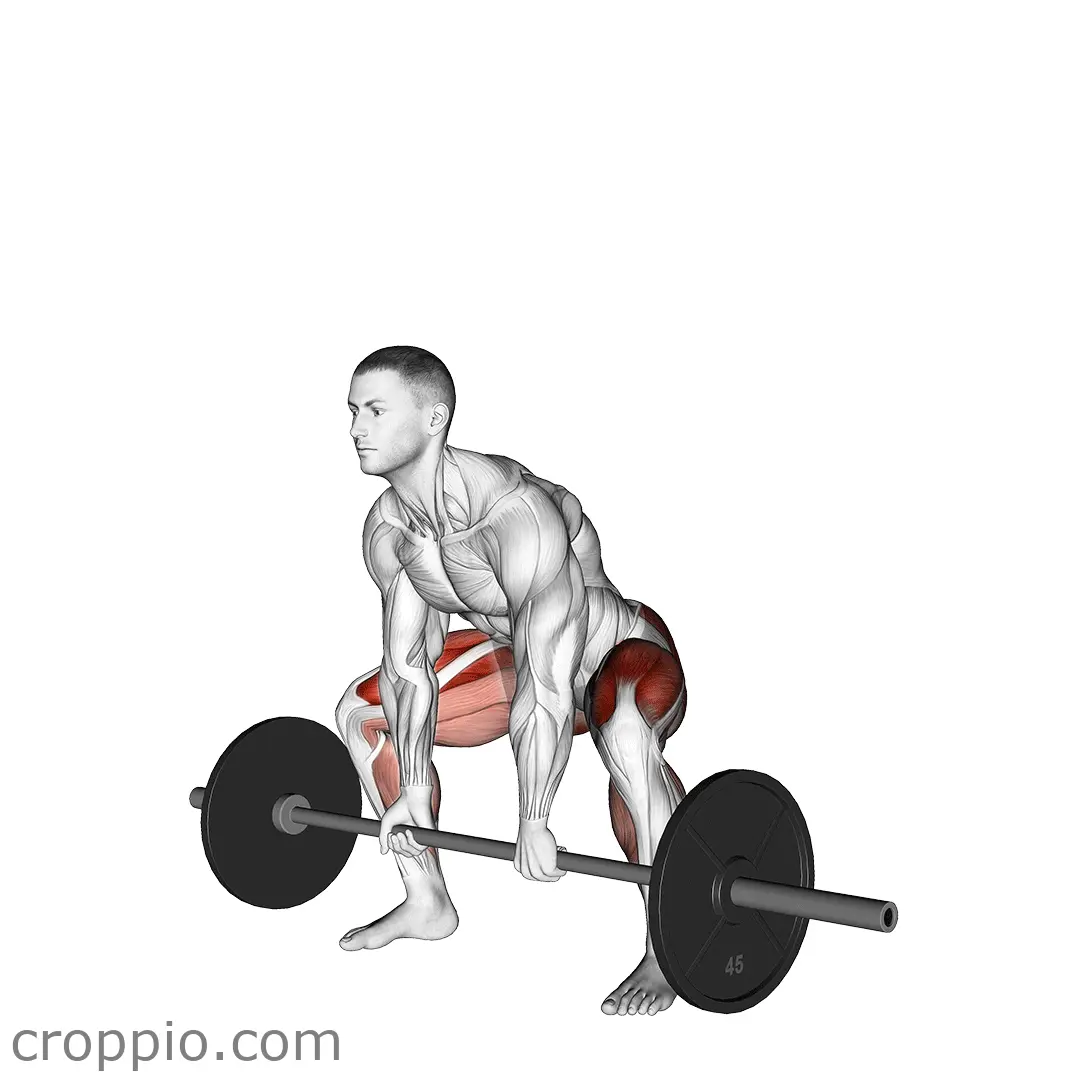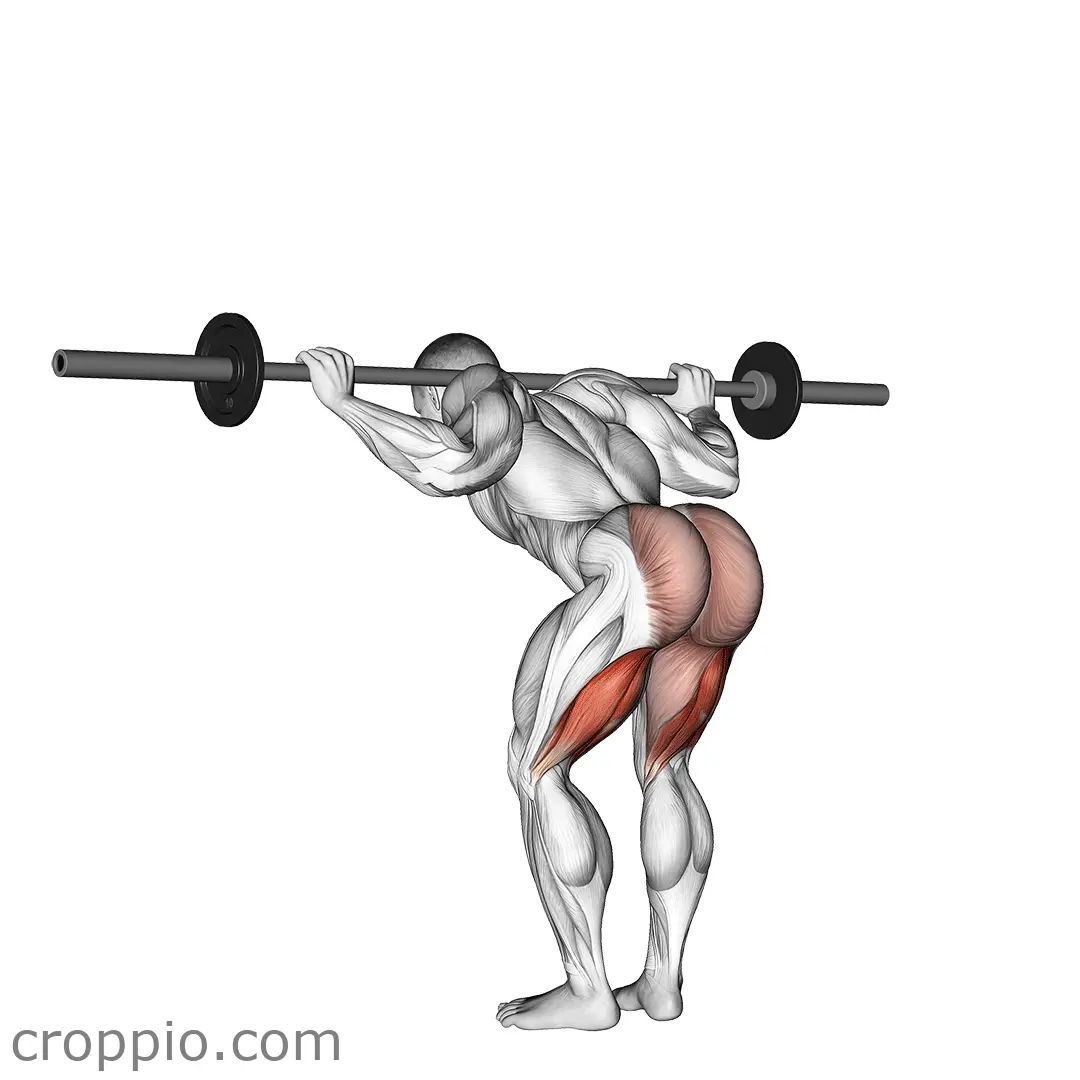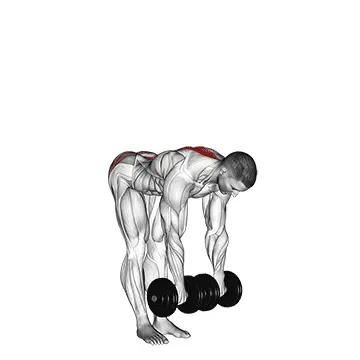Landmine Deadlift Movement

Muscles Involved
The landmine deadlift movement primarily targets the hamstrings, glutes, and lower back, making it an effective exercise for developing posterior chain strength. The movement requires significant activation of the hamstrings and gluteal muscles as you hinge at the hips to lift the weight. Additionally, the lower back, particularly the erector spinae, plays a crucial role in stabilizing the spine throughout the lift. Secondary muscles involved include the quadriceps, forearms, and upper back, as these muscles assist in maintaining proper posture and grip during the exercise.
Top Mistakes
- Improper hip hinge: Failing to hinge at the hips can lead to excessive strain on the lower back.
- Rounded back: Allowing the back to round during the lift can increase the risk of injury.
- Incorrect grip: Holding the handle too loosely or using an unsuitable grip can compromise stability and effectiveness.
- Inadequate weight distribution: Not balancing the landmine properly can lead to instability and uneven lifting.
Execution Tips
- Start with your feet shoulder-width apart and position the landmine securely on the ground.
- Grip the handle with both hands while keeping your arms extended in front of you.
- Engage your core and ensure your chest is up and back is flat as you hinge at the hips.
- Lower the weight toward the ground while keeping a slight bend in your knees, focusing on the glutes and hamstrings.
- Drive through your heels and stand back up, bringing your hips forward to complete the lift.
Workouts
The landmine deadlift can be easily incorporated into a comprehensive workout routine. A typical approach might involve performing 3 to 4 sets of 8 to 12 repetitions, depending on your fitness level. It pairs well with exercises like squats or lunges for a complete leg day, or it can be combined with upper body exercises such as rows or overhead presses for a full-body workout. Ensure to include adequate rest between sets to maintain optimal performance and form throughout the workout.
Conclusion
The landmine deadlift is a fantastic exercise that effectively targets critical muscle groups essential for improving strength and stability. By focusing on proper form and technique, this movement can help enhance athletic performance and reduce the risk of injury. Whether you are a beginner or an advanced lifter, the landmine deadlift can fit seamlessly into any training routine, providing diverse benefits ranging from enhanced muscular endurance to improved functional movement patterns.



